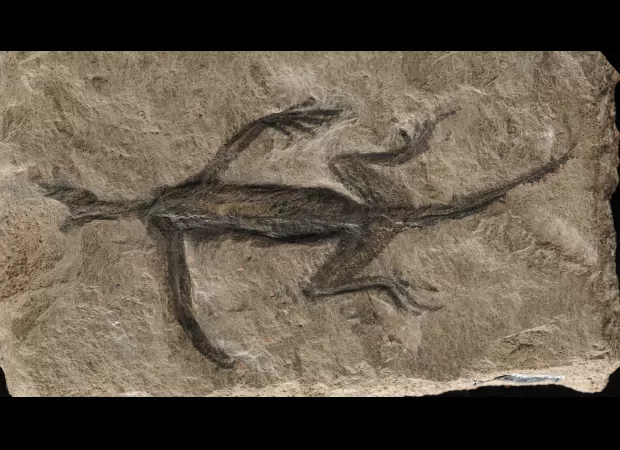Fake 280-million-year-old fossil from Italy debunked as famous
It has been a century to find.

The recent discovery of the oldest fossil reptile from the Alps, known as Tridentinosaurus antiquus, has caused quite a stir in the scientific community. This 280 million-year-old specimen was initially thought to be a groundbreaking find, offering valuable insight into the evolution of reptiles. However, upon closer analysis, it was revealed that what was believed to be incredibly preserved skin tissue was actually just paint.
The fossil was first unearthed in 1931 and was classified as a member of the reptile group Protorosauria. But doubts about its classification and the strange preservation of its skin led a team of researchers, including experts from Ireland's University College Cork, to further investigate. Through UV photography and microscopic analysis, it was determined that the dark body outline was in fact a layer of coating material, not actual soft tissue.
Dr. Valentina Rossi, a researcher from UCC, explained that finding soft tissues in a fossil can provide valuable information about the animal's external appearance and internal anatomy. However, in the case of Tridentinosaurus antiquus, the body outline was artificially created with the use of paint, most likely to enhance the fossil's appearance. This discovery has shed light on the deceptive practices of coating fossils with varnishes and lacquers, which was a common practice in the past and is still necessary in some cases to preserve specimens in museums.
Co-author Professor Evelyn Kustatscher from the Museum of Nature South Tyrol, who was also involved in the research, added that the peculiar preservation of Tridentinosaurus had puzzled experts for decades. But now, with the use of modern analytical methods, the mystery has finally been solved. The study, published in the journal Palaeontology, cautions researchers to approach the specimen with caution in future studies, but also acknowledges that some parts of the fossil, such as the bones of the hindlimbs and the presence of bony scales, may still be genuine.
The discovery of this forgery serves as a reminder to always question and thoroughly examine scientific findings. While the bones of Tridentinosaurus may still hold valuable information, the painted body outline has tainted its credibility as a specimen. Further research is needed to confirm the authenticity of the remaining parts of the fossil. But for now, the part-forgery of Tridentinosaurus antiquus has been brought to light, thanks to the use of modern scientific methods and rigorous analysis.


